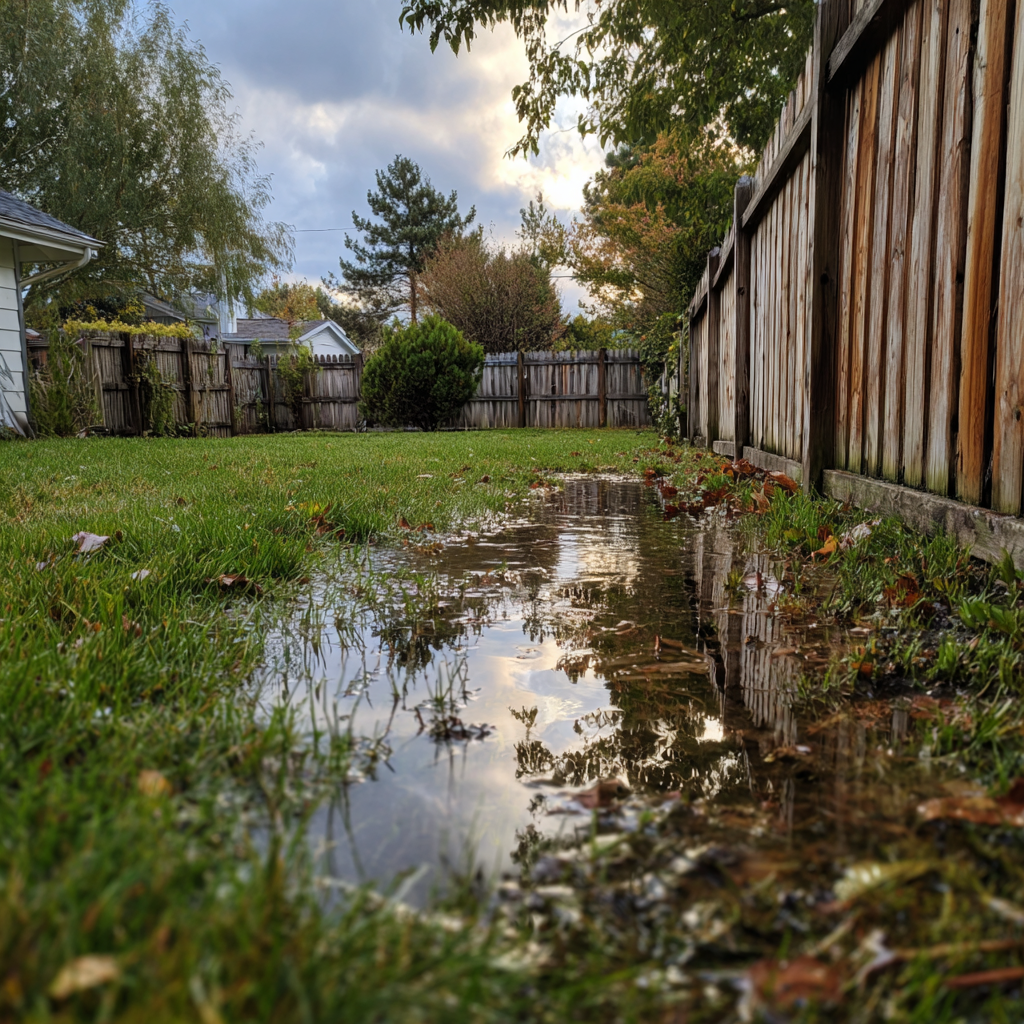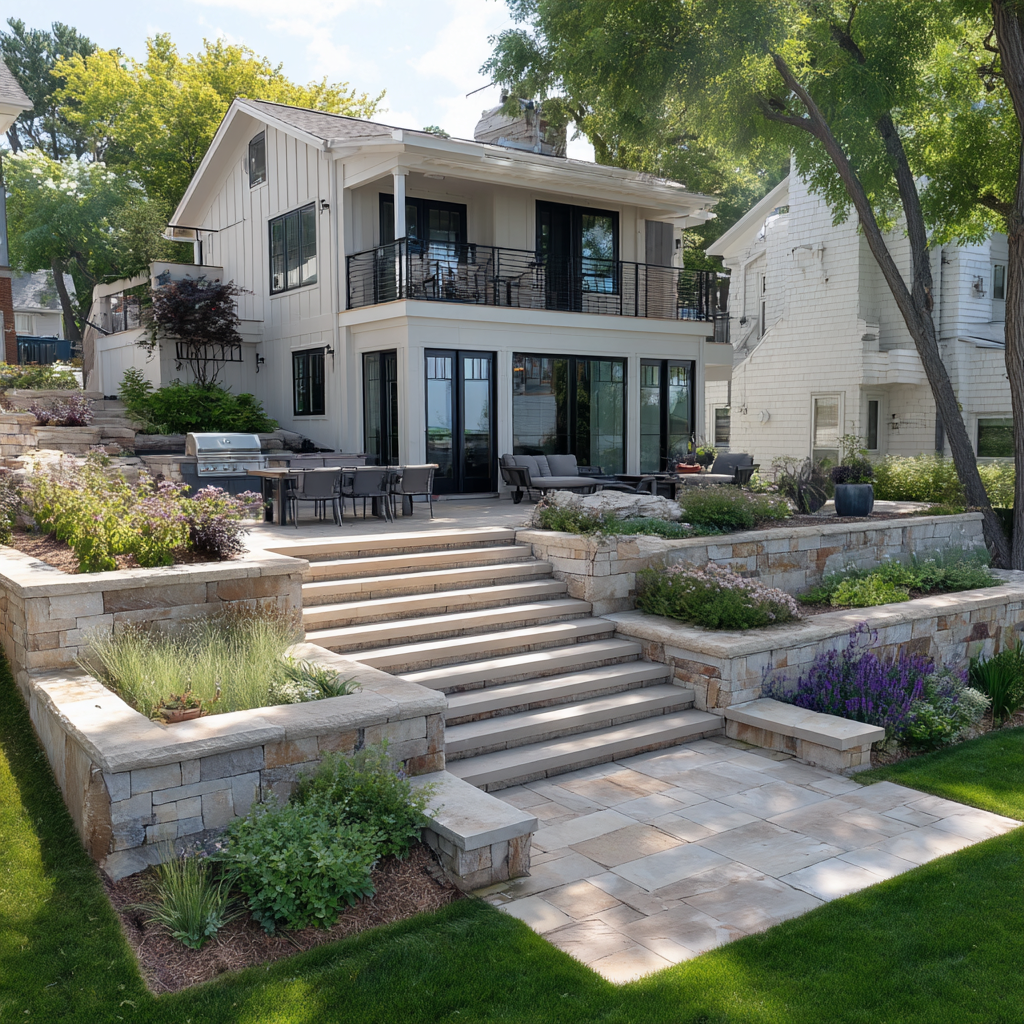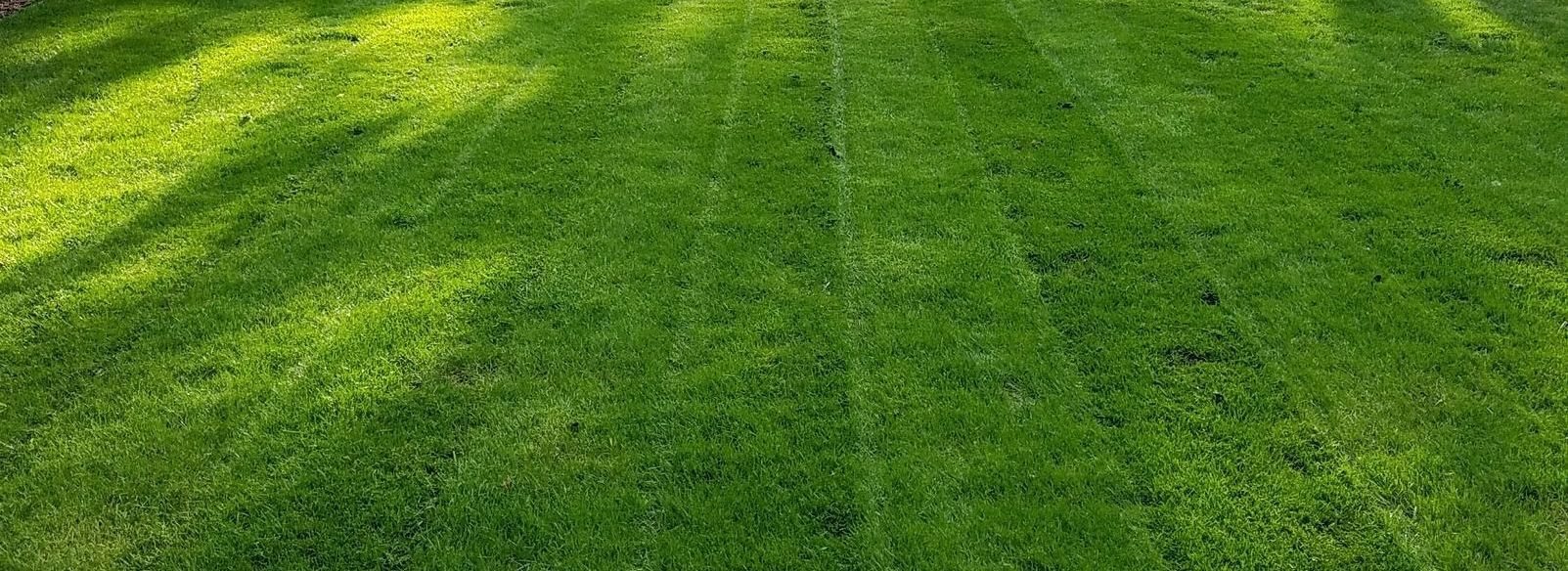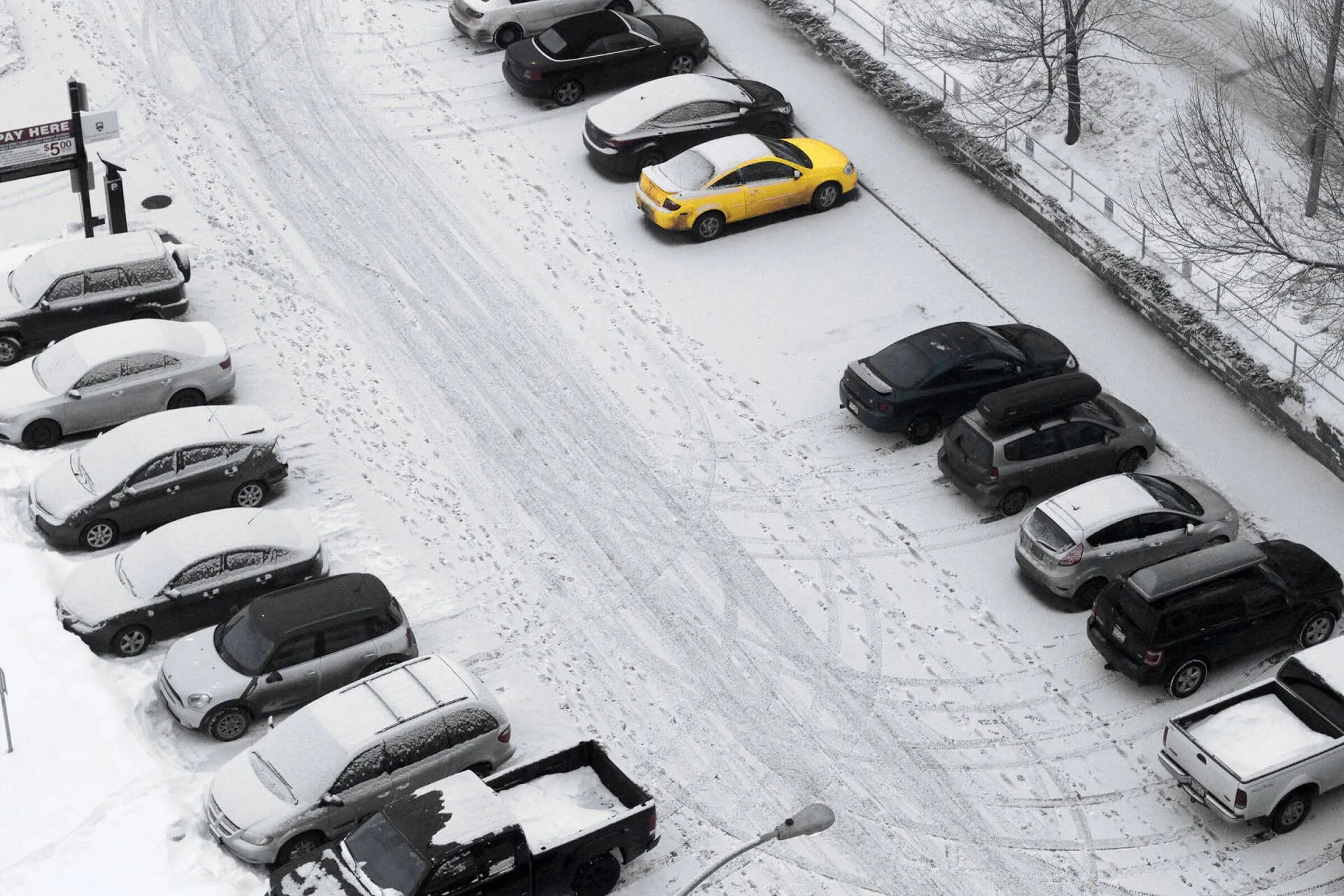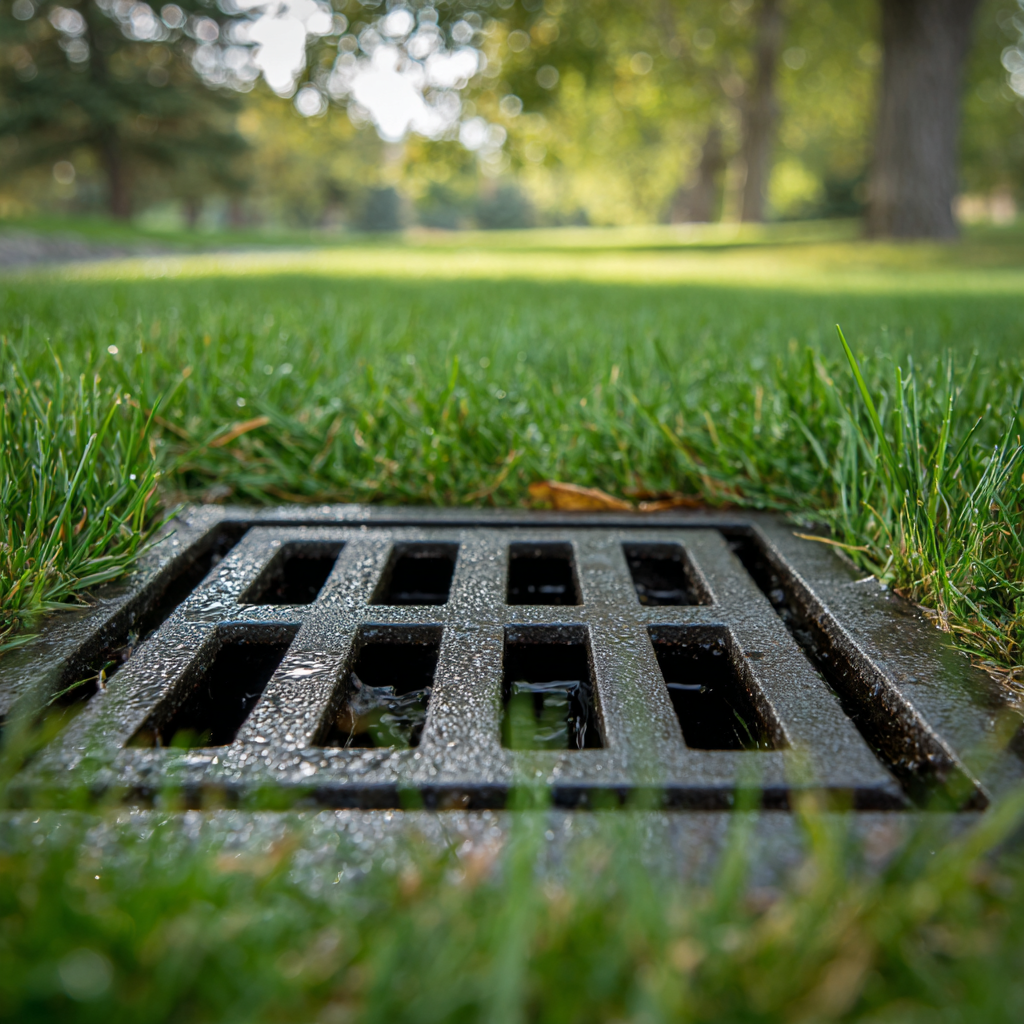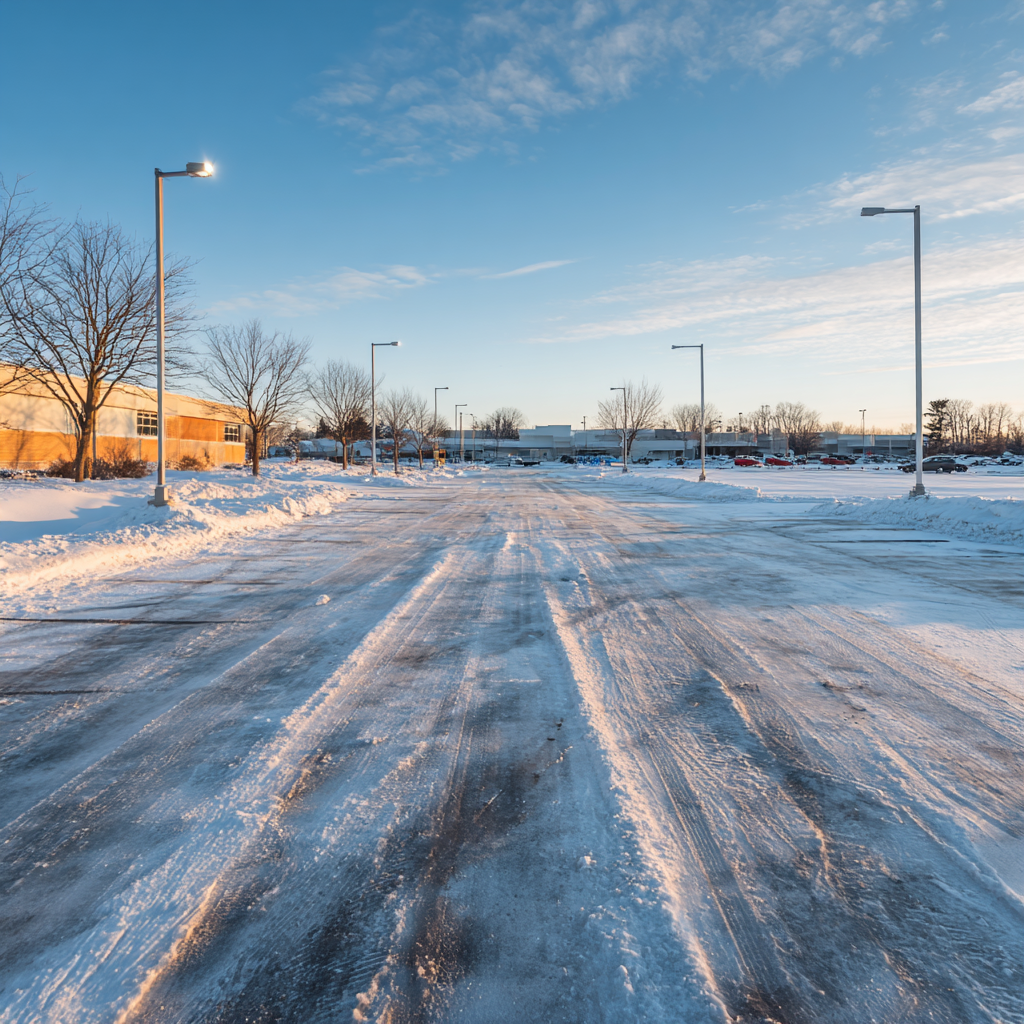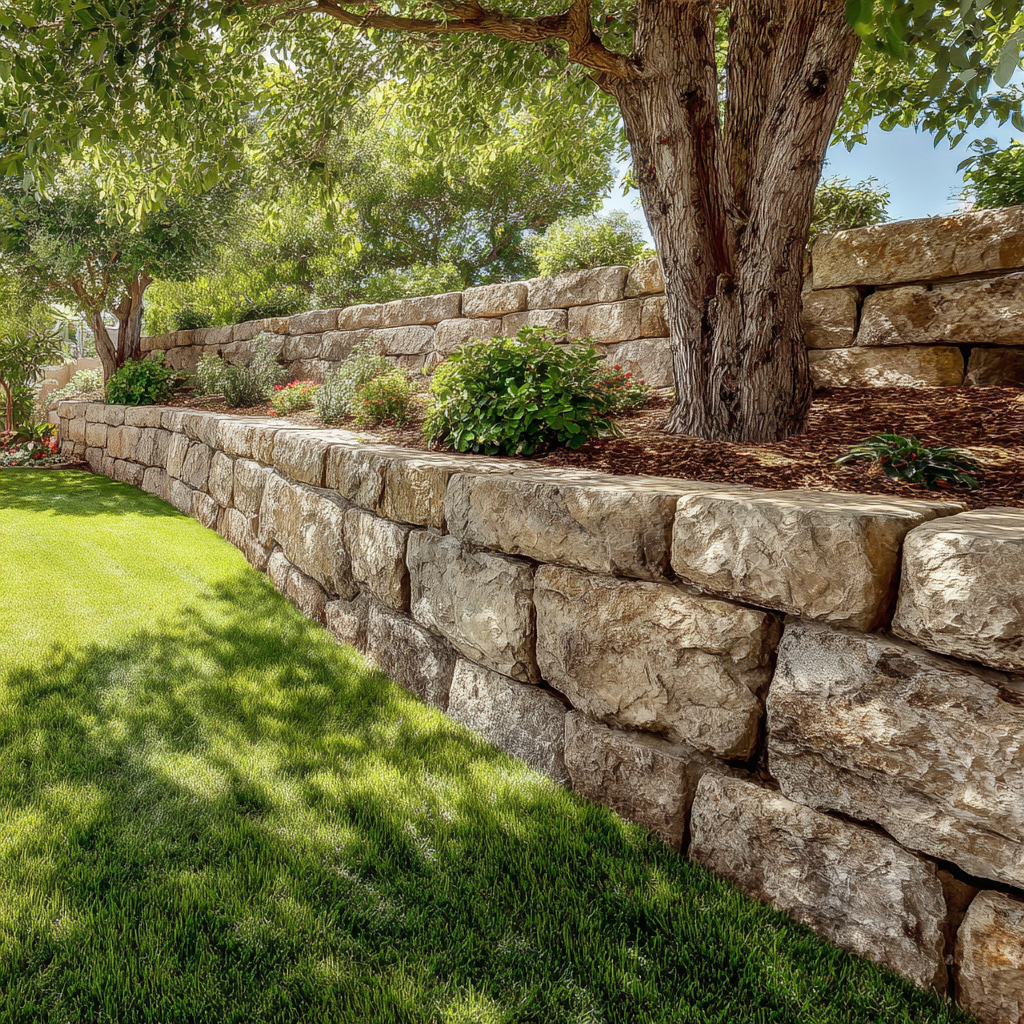Fix Your Neglected St. Louis Park Lawn: What's Salvageable vs. Start Over
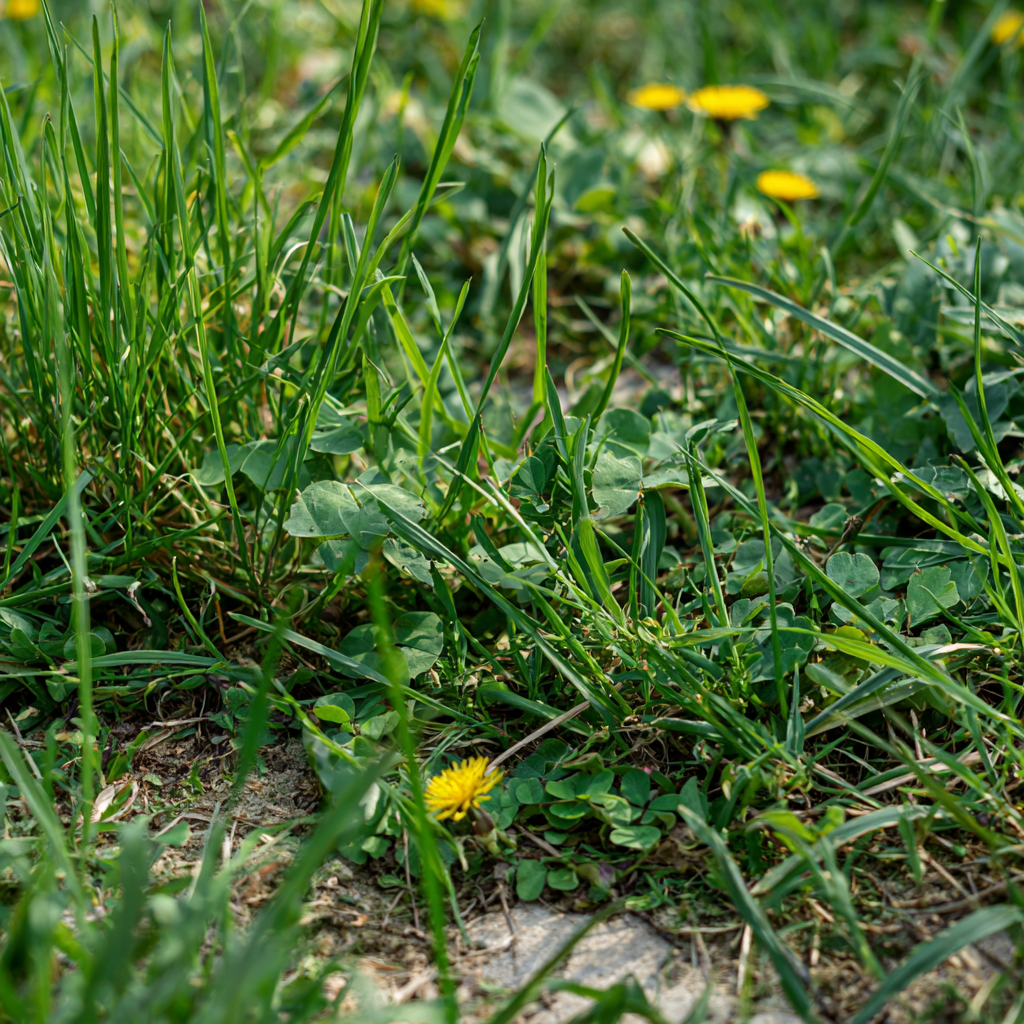
Fix Your Neglected St. Louis Park Lawn
You just bought a house in St. Louis Park with a lawn that's been neglected for years. More weeds than grass, bare patches everywhere, bumpy and uneven from lack of care. You're standing in your yard wondering if you can fix what's there or if you need to start completely over.
The previous owners clearly gave up on it or didn't know what to do. Now it's your problem. You want a lawn your family can enjoy, but you don't know if that means overseeding what's there, tearing everything out and reseeding, or just sodding over the whole mess.
Based on what we've assessed throughout St. Louis Park, most homeowners don't know how to evaluate their lawn's condition. They guess at solutions without understanding the problem. They try overseeding lawns that need complete renovation, or they consider expensive sodding when simpler approaches would work.
We help you understand what's salvageable and what needs complete renovation so you're not wasting money on wrong approaches.
Why Assessment Comes Before Action
Most homeowners jump straight to solutions without understanding what they're dealing with. "I'll just throw some seed down and see what happens" rarely works on neglected lawns. Understanding your lawn's current condition determines which approach will actually succeed.
Wrong approach wastes money and time. We've seen homeowners try overseeding lawns that were 80% weeds with almost no viable grass. They spent money on seed that never had a chance because there wasn't enough grass to build on and weeds immediately choked out the seedlings. We've also seen homeowners consider sodding entire lawns that could have been fixed with proper preparation and reseeding, spending thousands more than necessary.
Proper assessment first, then appropriate solution. This saves money by doing the right thing once instead of trying wrong approaches repeatedly and eventually ending up at the solution you should have started with.
What "Neglected" Actually Means: Levels of Lawn Damage
Not all neglected lawns are equally bad. Understanding severity helps determine which approach makes sense for your specific situation.
Mild neglect means you have 60-70% decent grass, just thin and weedy. Some bare spots exist but you've got mostly grass coverage. The grass is weak but alive. This lawn mostly needs thickening and weed control. Overseeding might work here.
Moderate neglect shows 40-50% grass and 50-60% weeds. Substantial bare areas exist throughout the lawn. The grass that remains is weak and struggling. This lawn likely needs full reseeding, not just overseeding, to get back to functional condition.
Severe neglect means 70% or more weeds with minimal viable grass remaining. Large bare areas or completely bare sections dominate. What little grass exists is dying or already dead. This lawn probably needs sodding or complete renovation with extensive preparation.
Complete failure is essentially no grass remaining, just weeds and bare ground. Soil is compacted from years of neglect. Erosion damage is visible. This lawn needs more than just grass - it may need soil work, grading, and definitely requires sodding or major renovation.
We assess St. Louis Park lawns on this spectrum constantly. Knowing where your lawn falls determines realistic approach and prevents wasting money on solutions that won't work for your condition.
Walking Your Lawn: What We Look For During Assessment
When we assess neglected lawns, we're looking at specific factors that determine what approaches will succeed.
Grass coverage and viability matters most. How much actual grass exists versus weeds? Is the grass healthy or barely surviving? Are grass plants sending out runners and actively growing, or just hanging on? Dense grass versus thin, weak grass makes the difference between overseeding success and failure.
Weed types and density tell us what you're competing against. What kinds of weeds dominate - aggressive spreaders like creeping charlie or just dandelions? Are weeds dense and well-established with deep root systems, or scattered and relatively new? Weed density indicates how much competition new grass faces and whether killing weeds will leave enough space for grass to fill in.
Bare areas reveal underlying problems. How much bare ground exists? Why are areas bare - is it compaction, shade, water issues, or just neglect? Can grass actually grow in these areas, or are underlying issues preventing establishment? Sometimes bare areas indicate problems that need fixing before any grass establishment approach will work.
Soil condition affects everything. Is soil compacted from years of neglect and lack of aeration? Does water pool in areas indicating drainage or severe compaction problems? What's the soil quality - actual topsoil or mostly clay and poor soil? We can't grow grass in terrible soil regardless of which method we use.
Surface issues from neglect include bumps, dips, and uneven areas. Erosion damage in spots. Depressions where trees were removed years ago. Overall surface condition affects both lawn appearance and which renovation approaches are practical.
Shade and growing conditions determine what's realistic. How much shade exists from mature trees? Can grass realistically grow in all areas, or are some sections too shady for any grass to thrive? Some areas might need landscape alternatives instead of lawn.
This assessment determines which renovation approach makes sense and which approaches will fail regardless of effort and investment.
When Overseeding Works (And When It Doesn't)
Overseeding works when you have 60-70% decent grass coverage. The grass is just thin, not dying. Weeds are present but not overwhelming. Soil condition is reasonable. The lawn basically just needs thickening and a boost.
What overseeding accomplishes is filling in thin areas, thickening overall coverage, and introducing improved grass varieties. It's a relatively affordable approach for lawns that have decent foundation to build on.
Overseeding fails when the lawn is mostly weeds with little grass. There's nothing to build on - you need existing grass for overseeding to work. It fails when grass is severely thin or dying because the existing grass is too weak to support new growth filling in. Heavily compacted soil prevents seed from establishing. Extensive bare areas need more than just thickening.
We've assessed many St. Louis Park lawns where homeowners thought overseeding would work. When we actually evaluate grass coverage and viability, often the lawn needs more than overseeding. Better to understand this upfront than waste $500-$1000 on seed and effort that won't succeed.
If your lawn is 60% weeds and 40% struggling grass, overseeding won't fix it. The weeds will choke out new seedlings just like they're choking out existing grass. You need to kill weeds first, but after killing 60% of your lawn, you don't have enough grass base for overseeding to work. That lawn needs reseeding or sodding.
When Full Lawn Reseeding Makes Sense
Reseeding is right when your lawn is 40-60% weeds and 40-60% struggling grass. Bare areas are substantial but soil is reasonable. After killing weeds, you'll have space for seed to establish. You can stay off the lawn for 6-8 weeks during establishment. Budget doesn't allow for sodding but the lawn needs complete renovation.
What reseeding accomplishes is complete grass coverage eventually, a fresh start with improved grass varieties, and addresses moderate to severe neglect. More affordable than sodding while still providing complete renovation.
Reseeding challenges include time - 6-8 weeks before the lawn is useable. Requires consistent watering during establishment. Need to keep family and pets off grass while it's establishing. Results aren't immediate like sodding. Success depends heavily on proper preparation and ongoing care.
Reseeding works well after killing weeds when you have reasonable soil to work with. You've addressed surface and drainage issues before seeding. Timing is right - fall is ideal in Minnesota for seeding. You can manage the establishment period without needing the yard for weeks.
We've reseeded many severely neglected St. Louis Park lawns successfully. It requires proper preparation but delivers great results when done right. The key is honest assessment that reseeding is appropriate for your lawn's condition, not just cheaper than sodding.
When Sodding Is the Best Choice
Sodding makes sense when your lawn is 70% or more weeds with minimal salvageable grass. You need the yard useable quickly for kids, pets, or just family use. Bare areas are extensive throughout. You want immediate results and budget allows for higher upfront investment.
What sodding accomplishes is instant lawn that looks established immediately. Useable in 2-3 weeks for light use, 4-6 weeks for normal use. Eliminates uncertainty of seed establishment. Works in situations where seeding feels too risky or takes too long.
Sodding advantages over seeding on neglected lawns are significant. No waiting 6-8 weeks to use your yard. Less vulnerability to washout or establishment failure. Immediate weed suppression because sod is dense, mature grass. Better for families who need the yard functional quickly and can't keep everyone off grass for two months.
Sodding is worth the investment when lawn is beyond what overseeding or reseeding can realistically fix in reasonable timeframe. You can't keep family off lawn for extended establishment period. You want to enjoy your yard this season instead of waiting until next year. Immediate results justify higher cost for your situation.
We install sod on St. Louis Park lawns where condition is so poor that seeding feels too risky, or where family needs mean waiting months for grass establishment isn't practical. Sometimes the right answer is spending more upfront to get results that actually work for how you need to use your property.

Assessing Soil Condition: Can Grass Even Grow Here?
Beyond grass coverage, soil condition determines whether any approach will succeed. You can't grow grass in terrible soil regardless of method.
Signs of reasonable soil include water infiltrating at reasonable rate - not pooling for days after rain. You can push a shovel in without extreme effort. Some topsoil layer exists, not just pure clay. Existing weeds are actually growing vigorously, which indicates if weeds thrive, grass can too.
Signs of problem soil include water pooling for days after rain. Soil is rock-hard and severely compacted. You're basically on pure clay with minimal topsoil. Even weeds struggle to grow, which is bad sign - if weeds can't thrive, grass won't either.
Fixing soil issues might involve core aeration to relieve compaction. Topdressing to add soil layer for grass roots to establish in. Sometimes you need to bring in topsoil before seeding or sodding. Severe compaction might need significant work before any grass establishment approach will succeed.
We assess soil condition as part of lawn evaluation. Sometimes the reason the lawn failed wasn't just neglect - soil conditions prevented success. Previous owners might have tried fixing the lawn but failed because underlying soil issues weren't addressed. We need to fix these problems before renovation or we're setting you up for the same failure.
The Role of Shade: Some Areas May Not Support Grass
Assessing shade levels throughout your property determines what's realistic. How many hours of sun do different areas receive? Has tree canopy grown substantially over the years, creating much more shade than when lawn was originally established? Are there areas that simply won't support grass regardless of approach?
Most grass needs 4-6 hours of direct sun minimum to thrive. Heavy shade with less than 3 hours sun won't support most grass varieties. Shade-tolerant grass varieties help but have limits - they still need some sun.
When to give up on grass includes areas under dense mature tree canopy, north sides of buildings with minimal sun exposure, and spots that have been bare for years despite various attempts to establish grass. Fighting these conditions wastes money.
Alternative approaches for these areas include shade-tolerant groundcovers that actually thrive in conditions grass won't tolerate. Mulch beds under trees that look intentional and appropriate. Landscape features like pathways or plantings instead of trying to force lawn where it won't succeed.
We help St. Louis Park homeowners identify areas worth renovating as lawn versus areas that should be landscaped differently. Trying to grow grass where conditions won't support it means ongoing failure and wasted investment. Sometimes the right answer is accepting certain areas shouldn't be lawn and designing appropriate alternatives.
The Preparation Steps: Same Sequence, Different Emphasis
Regardless of which grass establishment approach you choose - overseeding, reseeding, or sodding - preparation follows the same sequence.
Kill weeds first. Critical for all approaches. Even if overseeding decent grass, kill weeds first to create space. One-time spray even if you don't normally use chemicals. Wait 2-3 weeks for weeds to die completely before proceeding to next steps.
Fix surface issues next. Regrade to eliminate bumps and low spots. Topdress to smooth surface and add soil where needed. Fill depressions from old tree removals or settling. Create proper surface before adding grass, whether seed or sod.
Address drainage issues that would damage new lawn. Fix erosion problems that would wash away seed or undermine sod. Install underground downspout extensions if concentrated water is causing damage. Regrade areas where water pools. Protect your lawn investment from water damage regardless of establishment method.
These preparation steps apply whether you're overseeding, reseeding, or sodding. The difference is the final grass establishment step - which method makes sense for your lawn's condition. But preparation is consistent and critical for all approaches to succeed.
Decision Framework: Choosing Your Approach
Ask yourself these questions to determine which approach makes sense:
How much viable grass exists currently? If 60-70% grass, overseeding might work. If 40-60% grass, probably need reseeding. Less than 40% grass, consider sodding.
What's your budget realistically? Limited budget points toward overseed or reseed. Moderate budget allows full reseeding. Higher budget makes sodding possible.
How soon do you need the yard useable for your family? Can wait 8-10 weeks and seeding works. Need it in 3-4 weeks and sod makes sense.
Can you stay off the lawn during establishment? If yes, you can avoid the yard, seeding is possible. If no, kids and pets need the yard, sod makes more sense.
What's your risk tolerance? Comfortable with some uncertainty and seeding works. Want guaranteed results and sod provides that.
We walk through these questions with St. Louis Park homeowners after assessing their specific lawn condition. The answers combined with lawn assessment determine which approach makes sense. There's no single right answer - it depends on your situation, priorities, and constraints.
What We've Seen Work (and Not Work) in St. Louis Park
Overseeding failures we've seen involve lawns that were 70% weeds and 30% thin grass. Homeowners hoped overseeding would magically fill everything in. Instead, weeds outcompeted new grass seedlings. Money wasted on seed that never had a chance because the foundation wasn't there.
Reseeding successes happen on severely neglected lawns after proper preparation. Kill weeds thoroughly, fix surface issues and drainage, reseed in fall with quality seed, manage establishment period properly.
Good results within one season. Works great for homeowners who can keep off the lawn during establishment and follow care requirements.
Sodding successes involve lawns beyond saving through seeding approaches. Families who needed yards useable immediately for kids. Instant transformation from disaster to functional lawn. Higher cost but delivered results that made sense for their situation and needs.
Common mistakes include choosing wrong approach for actual lawn condition. Trying the cheapest option when lawn actually needs more intensive approach. Not preparing properly before seeding or sodding and wondering why results are poor. Unrealistic expectations about timelines and what different approaches can accomplish.
We've worked on dozens of neglected St. Louis Park lawns over the years. The pattern is clear - proper assessment and appropriate approach lead to success. Wrong approach wastes money regardless of how much effort you put in. Better to spend money on right solution once than waste money on wrong solutions repeatedly.
Cost Reality: What Does It Actually Take?
Overseeding neglected lawn runs $500-$1,500 including weed control, surface prep, and seed. Least expensive option but only works on lawns with decent grass base to build on.
Full lawn reseeding costs $2,000-$5,000 including weed control, grading, quality seed, and establishment care. Mid-range investment that works for moderate to severe neglect when properly executed.
Sodding runs $5,000-$12,000 or more depending on lawn size. Highest cost but provides immediate results and works on worst-case scenarios where other approaches are too risky or take too long.
Preparation costs apply to all approaches. Weed killing costs $100-$300. Grading and topdressing runs $1,500-$4,000 depending on how much work is needed. Drainage work if required adds $500-$5,000 or more depending on issues being addressed.
We provide detailed estimates after assessing your specific lawn condition. Better to understand real costs upfront than be surprised later or waste money on approaches that won't work for your situation.
Setting Realistic Expectations
Overseeding results show noticeable improvement in 4-6 weeks. Full results develop over one growing season. Works great on lawns that just need boost and thickening. Won't fix severely neglected lawns regardless of effort.
Reseeding results include grass visible in 2-3 weeks, useable in 8-10 weeks, looks established by end of first season, continues improving in second season as grass fully matures and fills in.
Sodding results are instant green lawn, useable in 2-3 weeks, looks mature immediately, maintains appearance with proper care and watering during establishment.
Understanding what to expect from different approaches prevents disappointment and helps you choose the right method. Overseeding severely neglected lawns leads to disappointment. Reseeding when you need immediate results creates frustration. Sodding when overseeding would have worked wastes money. Match approach to condition and needs.
Know What You're Working With Before You Start
Your neglected St. Louis Park lawn can probably be fixed. The question is which approach actually makes sense for your specific condition and situation. Overseeding works great on lawns that just need thickening - it fails completely on lawns that are mostly weeds with minimal grass. Reseeding works on moderate to severe neglect when properly prepared. Sodding solves problems when lawn is beyond what seeding can realistically fix or when timeline demands immediate results.
We assess dozens of neglected St. Louis Park lawns every year. The homeowners who succeed are the ones who understand their lawn's actual condition and choose appropriate approach based on that reality. The ones who struggle picked wrong approach for their situation - usually trying to save money with overseeding when their lawn needed complete renovation, or considering expensive sodding when proper preparation and reseeding would have worked.
Proper assessment first, then appropriate solution matched to condition. That's how you fix a neglected lawn without wasting money on approaches that won't work for what you're actually dealing with.
Dealing with a neglected lawn in St. Louis Park? Contact KG Landscape for an honest assessment. We'll evaluate your lawn's condition, explain what's salvageable versus what needs replacing, and help you choose the approach that will actually work for your situation.
Frequently Asked Questions
How do I know if my lawn is too far gone to overseed?
If your lawn is more than 50% weeds with less than 50% viable grass, it's too far gone for overseeding to work effectively. Overseeding needs decent grass base to build on - roughly 60-70% grass coverage minimum. When you kill weeds on a lawn that's mostly weeds, you're left with mostly bare ground. New seed doesn't have existing grass to fill in around and gets overwhelmed. We assess grass versus weed percentages to determine if overseeding is realistic or if you need full reseeding or sodding.
What percentage of grass coverage do I need for overseeding to work?
You need approximately 60-70% viable grass coverage for overseeding to succeed. Below this threshold, there isn't enough existing grass to support thickening approach. The existing grass needs to be reasonably healthy too, not just barely surviving. If you're at 40-50% grass or less, you're looking at full reseeding rather than overseeding. We evaluate both coverage percentage and grass health to determine if overseeding is appropriate for your lawn's condition.
Is it worth trying to save a neglected lawn or better to start over with sod?
Depends on severity of neglect and your priorities. Lawns with 40-60% viable grass can often be saved through reseeding at much lower cost than sodding. Lawns that are 70%+ weeds with minimal grass and families needing immediate results benefit more from sodding. Budget, timeline, and how soon you need the yard useable all factor in. We assess condition and discuss your priorities to recommend whether saving through reseeding makes sense or if sodding is smarter investment for your situation.
How long does it take to see results from different lawn renovation approaches?
Overseeding shows noticeable improvement in 4-6 weeks with full results over one season. Reseeding shows grass emergence in 2-3 weeks, useable lawn in 8-10 weeks, and established appearance by season end. Sodding provides instant results with useable lawn in 2-3 weeks and mature appearance immediately. Timeline needs affect which approach makes sense - families needing quick results benefit from sodding while those who can wait get good results from properly executed reseeding at lower cost.
Can you fix a severely neglected lawn with seeding or do you have to sod?
Severely neglected lawns can be fixed with reseeding if properly prepared and you can manage the establishment period. Kill weeds thoroughly, address soil and surface issues, seed at optimal time (fall), and provide proper care during establishment. We've successfully reseeded lawns that were 70% weeds after proper preparation. However, sodding is often smarter choice when lawn is severely neglected and family needs immediate useable yard. Success with reseeding requires patience and proper care that not all families can manage with severely damaged starting point.
